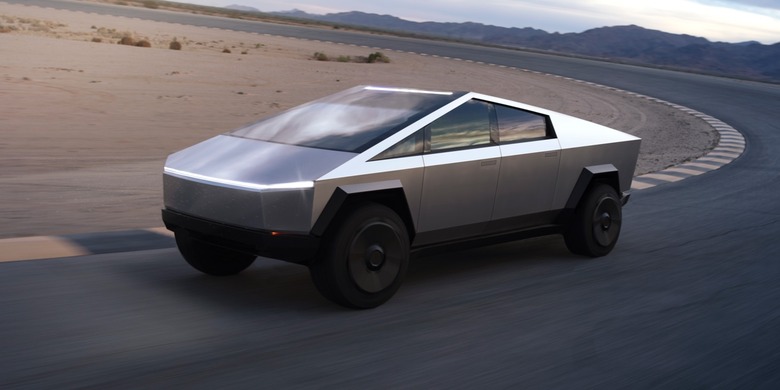Tesla's Cheapest Cybertruck May Not Arrive Until 2023
When Tesla started manufacturing the Model 3, it made a point to prioritize production of pricier configurations. As a result, folks interested in purchasing the entry-level Model 3 for $35,000 were forced to wait for quite some time. The rationale behind Tesla's decision in this regard was quite simple: to generate as much cash as possible as quickly as possible. At the time, Elon Musk said that if Tesla started shipping the low-cost Model 3 right away, it "would cause Tesla to lose money and die."
While Tesla's economic situation isn't as precarious as it once was — the company does capable of turning a profit these days — it's employing the same production strategy it used with the Model 3 on the recently introduced Cybertruck. Put simply, Tesla will first focus on producing the Dual Motor and Tri Motor AWD models before turning its attention to the entry-level Single Motor RWD model.
According to the pre-order page for Tesla's Cybertruck, production on the Dual Motor and Tri Motor models is slated to begin in late 2021. This, of course, is in line with the production guidelines Tesla announced at the pickup truck's unveiling.
Production on the Single Motor Cybertruck model, however, has been pushed back by a full year. Per Tesla's updated website, production for the $39,900 model won't begin until late 2022. The reality, it seems, is that anyone interested in the base model Cybertruck will likely have to wait until 2023.
While this may be frustrating to many prospective buyers, it does make sense from a business perspective. Demand for Tesla vehicles has never been much of an issue, but the company's penchant for bleeding money certainly has. Consequently, it makes sense why Tesla would want to focus on more profitable Cybertruck models above all else.
It's worth mentioning that Tesla has something of a bad history when it comes to meeting production deadlines. Indeed, every car Tesla has ever released has been subject to long delays. Looking ahead — with the Tesla Semi, Tesla Roadster 2, Model Y, and Cybertruck in the pipeline — it will be interesting to see if the delays continue or if Tesla can actually meet its initial production projections across the board.
As a final note, Morgan Stanley analyst Adam Jonas recently told CNBC that Tesla — in a best case scenario — could sell upwards of 100,000 Cybertrucks "by the end of 2024." The pickup truck market is undeniably huge, but it remains to be seen if the unique aesthetic of the Cybertruck actually helps lure buyers in or pushes them away.
